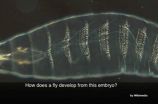(Press-News.org) An international team of scientists has identified a gene mutation that causes aplastic anemia, a serious blood disorder in which the bone marrow fails to produce normal amounts of blood cells. Studying a family in which three generations had blood disorders, the researchers discovered a defect in a gene that regulates telomeres, chromosomal structures with crucial roles in normal cell function.
"Identifying this causal defect may help suggest future molecular-based treatments that bypass the gene defect and restore blood cell production," said study co-leader Hakon Hakonarson, M.D., Ph.D., director of the Center for Applied Genomics at The Children's Hospital of Philadelphia (CHOP).
Hakonarson and CHOP colleagues collaborated with Australian scientists on the study, published online Sept. 9 in the journal Blood.
"We're thrilled by this discovery which has advanced our understanding of certain gene mutations and the causal relationship to specific diseases," said study co-leader Tracy Bryan, Ph.D., Unit Head of the Cell Biology Unit at the Children's Medical Research Institute in Westmead, New South Wales, Australia.
The research team studied an Australian family with aplastic anemia and other blood disorders, including leukemia. Hakonarson and lead analyst Yiran Guo, Ph.D., along with genomics experts from BGI-Shenzhen, performed whole-exome sequencing on DNA from the families and identified an inherited mutation on the ACD gene, which codes for the telomere-binding protein TPP1.
Telomeres, complex structures made of DNA and protein, are located on the end of chromosomes, where they protect the chromosomes' stability. They are sometimes compared to plastic tips at the end of shoelaces that prevent the laces from fraying.
Telomeres shorten after each cell division, and gradually lose their protective function. Aging cells, with their shortened telomeres, become progressively more vulnerable to DNA damage and cell death. Separately from the aging process, certain inherited and acquired disorders may shorten telomeres and injure rapidly dividing blood-forming cells produced in bone marrow. This leads to bone marrow failure, one example of which is aplastic anemia.
Bryan's team investigated the function of the ACD gene. They determined that the mutation shortened telomeres and interrupted the ability of telomeres to attract the enzyme telomerase, which counteracts telomere shortening and thus protects cells.
In the current study, the researchers showed that the mutation in ACD alters the telomere-binding protein TPP1, disrupting the interactions between telomere and telomerase. Without access to telomerase to help maintain telomeres, blood cells lose their structural integrity and die, resulting in bone marrow failure and aplastic anemia.
Nine other genes were previously found to play a role in bone marrow failure disorders. The current study adds ACD to the list, the first time the gene has been shown to have a disease-causing role.
"This improved understanding of the underlying molecular mechanisms may suggest new approaches to treating disorders such as aplastic anemia," said Hakonarson. "For instance, investigators may identify other avenues for recruiting telomerase to telomeres to restore its protective function."
INFORMATION:
Guo Y et al, "Inherited bone marrow failure associated with germline mutation of ACD, the gene encoding telomere protein TPP1," Blood, published online Sept 9, 2014. http://doi.org/10.1182/blood-2014-08-596445
In addition to his position at CHOP, Hakonarson also is on the faculty of the Perelman School of Medicine at the University of Pennsylvania. Study funding came from an Institutional Development Award to the Center for Applied Genomics from The Children's Hospital of Philadelphia, a Cancer Institute NSW Career Development and Support Fellowship, the Kids Cancer Alliance and the Cancer Council NSW, among other sources.
About The Children's Hospital of Philadelphia: The Children's Hospital of Philadelphia was founded in 1855 as the nation's first pediatric hospital. Through its long-standing commitment to providing exceptional patient care, training new generations of pediatric healthcare professionals and pioneering major research initiatives, Children's Hospital has fostered many discoveries that have benefited children worldwide. Its pediatric research program receives the highest amount of National Institutes of Health funding among all U.S. children's hospitals. In addition, its unique family-centered care and public service programs have brought the 535-bed hospital recognition as a leading advocate for children and adolescents. For more information, visit http://www.chop.edu.
Gene mutation discovered in blood disorder
CHOP expert, collaborators identify mutation in aplastic anemia that shortens telomeres on ends of chromosomes
2014-09-23
ELSE PRESS RELEASES FROM THIS DATE:
NASA sees Tropical Depression Fung-Wong becoming more frontal
2014-09-23
Tropical Depression Fung-Wong skirted the coast of mainland China and is moving through the East China Sea. NASA's Aqua satellite captured cloud top temperature data that showed strongest thunderstorms were stretched out as the storm continues to look more frontal in nature.
When NASA's Aqua satellite passed over Fung-Wong on Sept. 22 at 1:23 p.m. EDT, the Atmospheric Infrared Sounder or AIRS instrument read cloud top temperatures. AIRS detected strongest, highest storms, those with the coldest cloud tops stretched out from northwest to southeast giving the depression ...
New research suggests sleep apnea screening before surgery
2014-09-23
Scheduled for surgery? New research suggests that you may want to get screened and treated for obstructive sleep apnea (OSA) before going under the knife. According to a first-of-its-kind study in the October issue of Anesthesiology, the official medical journal of the American Society of Anesthesiologists® (ASA®), patients with OSA who are diagnosed and treated for the condition prior to surgery are less likely to develop serious cardiovascular complications such as cardiac arrest or shock.
"OSA is a common disorder that affects millions and is associated with an increased ...
Recreating the stripe patterns found in animals by engineering synthetic gene networks
2014-09-23
VIDEO:
Researchers at the CRG try to understand how networks of genes work together to create specific patterns like stripes.
They have gone beyond studying individual networks and have created computational and...
Click here for more information.
Pattern formation is essential in the development of animals and plants. The central problem in pattern formation is how can genetic information be translated in a reliable manner to give specific spatial patterns of cellular differentiation. ...
Airway muscle-on-a-chip mimics asthma
2014-09-23
The majority of drugs used to treat asthma today are the same ones that were used 50 years ago. New drugs are urgently needed to treat this chronic respiratory disease, which causes nearly 25 million people in the United States alone to wheeze, cough, and find it difficult at best to take a deep breath.
But finding new treatments is tough: asthma is a patient-specific disease, so what works for one person doesn't necessarily work for another, and the animal models traditionally used to test new drug candidates often fail to mimic human responses – costing tremendous ...
Eating five a day may keep the blues away
2014-09-23
Fruit and vegetable consumption could be as good for your mental as your physical health, new research suggests.
The research, conducted by the University of Warwick's Medical School using data from the Health Survey for England, and published by BMJ Open focused on mental wellbeing and found that high and low mental wellbeing were consistently associated with an individual's fruit and vegetable consumption.
33.5% of respondents with high mental wellbeing ate five or more portions of fruit and vegetables a day, compared with only 6.8% who ate less than one portion. ...
Southampton scientists grow a new challenger to graphene
2014-09-23
A team of researchers from the University of Southampton's Optoelectronics Research Centre (ORC) has developed a new way to fabricate a potential challenger to graphene.
Graphene, a single layer of carbon atoms in a honeycomb lattice, is increasingly being used in new electronic and mechanical applications, such as transistors, switches and light sources, thanks to the unprecedented properties it offers: very low electrical resistance, high thermal conductivity and mechanically stretchable yet harder than diamond.
Now, ORC researchers have developed molybdenum di-sulphide ...
Search for better biofuels microbes leads to the human gut
2014-09-23
CHAMPAIGN, Ill. — Scientists have scoured cow rumens and termite guts for microbes that can efficiently break down plant cell walls for the production of next-generation biofuels, but some of the best microbial candidates actually may reside in the human lower intestine, researchers report.
Their study, reported in the Proceedings of the National Academy of Sciences, is the first to use biochemical approaches to confirm the hypothesis that microbes in the human gut can digest fiber, breaking it down into simple sugars in order to ferment them into nutrients that nourish ...
Results of the 1st EORTC Cancer Survivorship Summit
2014-09-23
A special issue of the European Journal of Cancer presents detailed reports on the wide range of research presented during the 1st EORTC Cancer Survivorship Summit held this past January in Brussels, Belgium.
Early diagnosis, targeted therapeutics, and more personalized multimodal treatments has boosted survival rates of patients with cancer and led to a large and rapidly increasing number of cancer survivors. Despite this good news, cancer survivors are often confronted with a broad spectrum of late adverse treatment effects and some must also deal with societal discrimination ...
Nanotubes help healing hearts keep the beat
2014-09-23
Carbon nanotubes serve as bridges that allow electrical signals to pass unhindered through new pediatric heart-defect patches invented at Rice University and Texas Children's Hospital.
A team led by bioengineer Jeffrey Jacot and chemical engineer and chemist Matteo Pasquali created the patches infused with conductive single-walled carbon nanotubes. The patches are made of a sponge-like bioscaffold that contains microscopic pores and mimics the body's extracellular matrix.
The nanotubes overcome a limitation of current patches in which pore walls hinder the transfer ...
Study uncovers genetic driver of inflammation, uses it to prevent and treat liver cancer
2014-09-23
Inflammation has been shown to be a driving force behind many chronic diseases, especially liver cancer, which often develops due to chronic inflammation caused by conditions such as viral hepatitis or alcoholism and has relatively few effective treatment options. Now, scientists at Virginia Commonwealth University Massey Cancer Center have demonstrated for the first time in preclinical studies that blocking the expression of a gene known as astrocyte elevated gene-1 (AEG-1) halts the development and progression of liver cancer by regulating inflammation. This research ...
LAST 30 PRESS RELEASES:
Missed signals: Virginia’s septic strategies overlook critical timing, study warns
Delayed toxicities after CAR T cell therapy for multiple myeloma are connected and potentially preventable
Scientists find cellular key to helping plants survive in saltwater
Medical cannabis program reduces opioid use
Immunotherapy works for sepsis thanks to smart patient selection
Cardiovascular events 1 year after RSV infection in adults
US medical prices and health insurance premiums, 1999-2024
Medical cannabis and opioid receipt among adults with chronic pain
Multichannel 3D-printed bioactive scaffold combined with siRNA delivery for spinal cord injury recovery
Triaptosis—an emerging paradigm in cancer therapeutics
A new paradigm in spectroscopic sensing: The revolutionary leap of SERS-optical waveguide integration and ai-enabled ultra-sensitive detection
Sweet tooth: How blood sugar migration in diabetes affects cavity development
Lowest suicide rate is in December but some in media still promote holiday-suicide myth
Record-breaking cosmic explosion challenges astronomers’ understanding of gamma-ray bursts
Excessive heat harms young children’s development, study suggests
Quanta Books to publish popular math and physics titles by Terence Tao and David Tong
Philanthropic partnerships fund next-generation instruments for mid-sized telescopes
AI offers ‘roadmap’ to plant genetics
Myosin XI-1: A key molecular target for salt-tolerant crops
Pusan National University study highlights the health hazards of ultrafine particles from small home appliances with electric heating coils and brushed DC motors
Global first: New Indigenous-led research initiative to revitalize legal orders
Transforming acoustic waves with a chip
When climate risk hits home, people listen: Study reveals key to engagement with disaster preparedness messaging
Major breakthrough against diabetes thanks to a microbial molecule that disarms inflammation
Silicon chips on the brain: Researchers announce a new generation of brain-computer interface
Getting rest is the best
Towards sustainable organic synthesis – Mechanochemistry replaces lithium with sodium in organic reactions
Wireless device ‘speaks’ to the brain with light
Greenhouse gases to intensify extreme flooding in the Central Himalayas
New study sheds light on Milky Way's mysterious chemical history
[Press-News.org] Gene mutation discovered in blood disorderCHOP expert, collaborators identify mutation in aplastic anemia that shortens telomeres on ends of chromosomes






